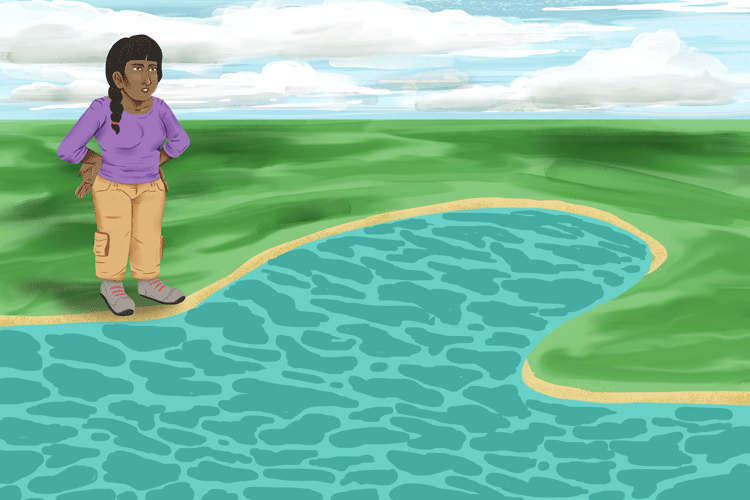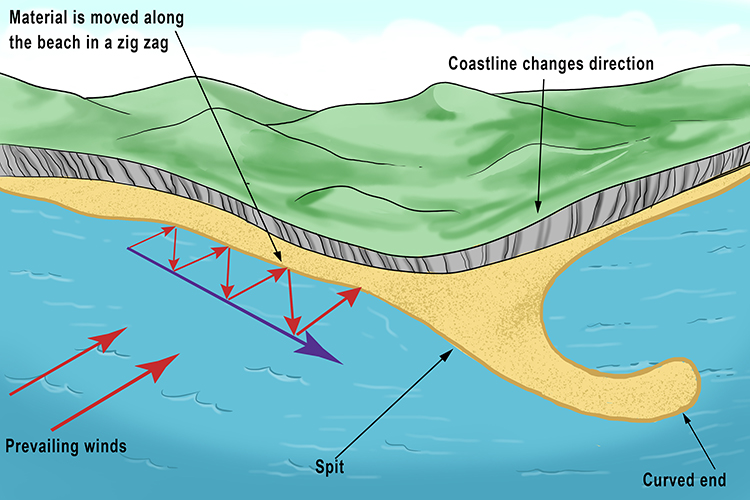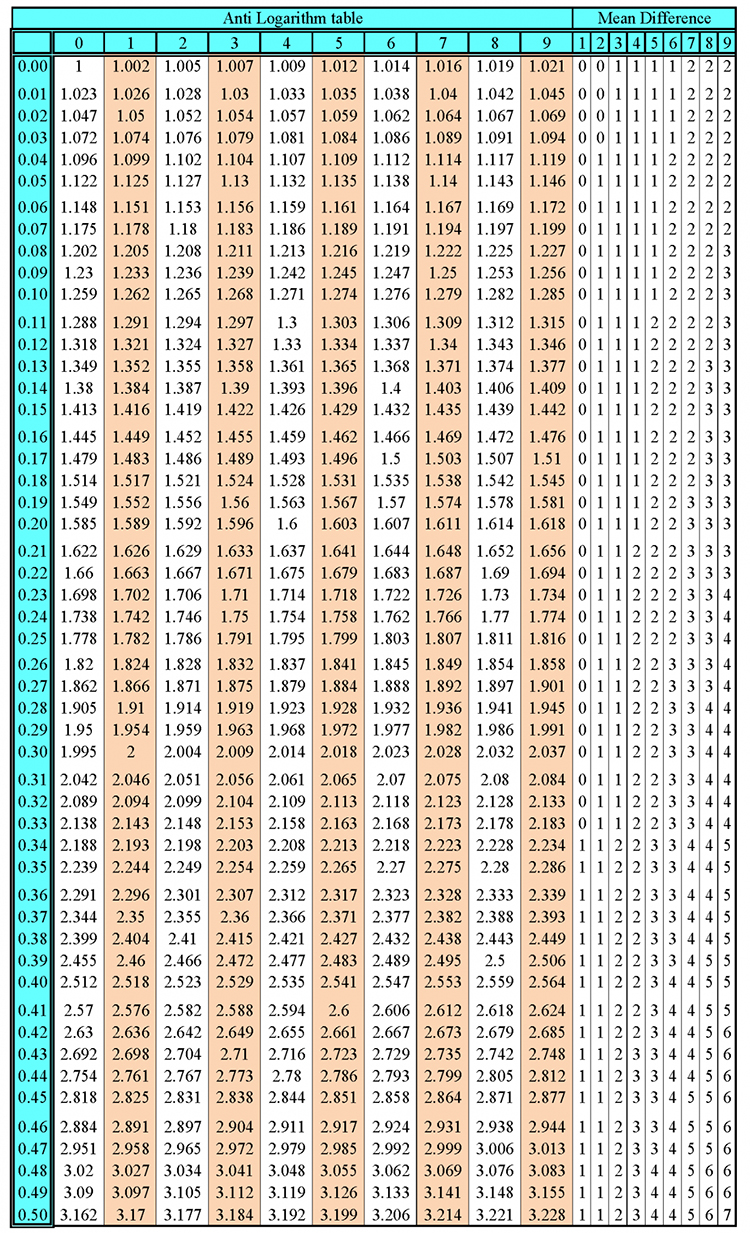Spit – A depositional landform formed when a finger of sediment extends from the shore out to sea, often at a river mouth. It usually has a curved end because of opposing winds and currents
To remember the meaning of the term Spit, use the following mnemonic:
She would spit into the sea and watch it form a landform. The wind caught the end of the spit so it curved in.

How they are really formed is as shown below:

Where there is a prevailing wind blowing at an angle to the coastline, longshore drift can occur. This is the continual movement of sand and pebbles along a beach in a zig-zag pattern, due to the tide coming in at an angle and then going out straight, or perpendicular to the shore. (See longshore drift for a more detailed explanation).
When this longshore drift action reaches a curve or "corner" in the coastline, the sand moved along by the longshore drift is deposited. The deposited sand gradually builds up until it becomes a spit extending out into the sea.
Spits are often formed at the mouths of estuaries, where rivers flow out into the sea.




